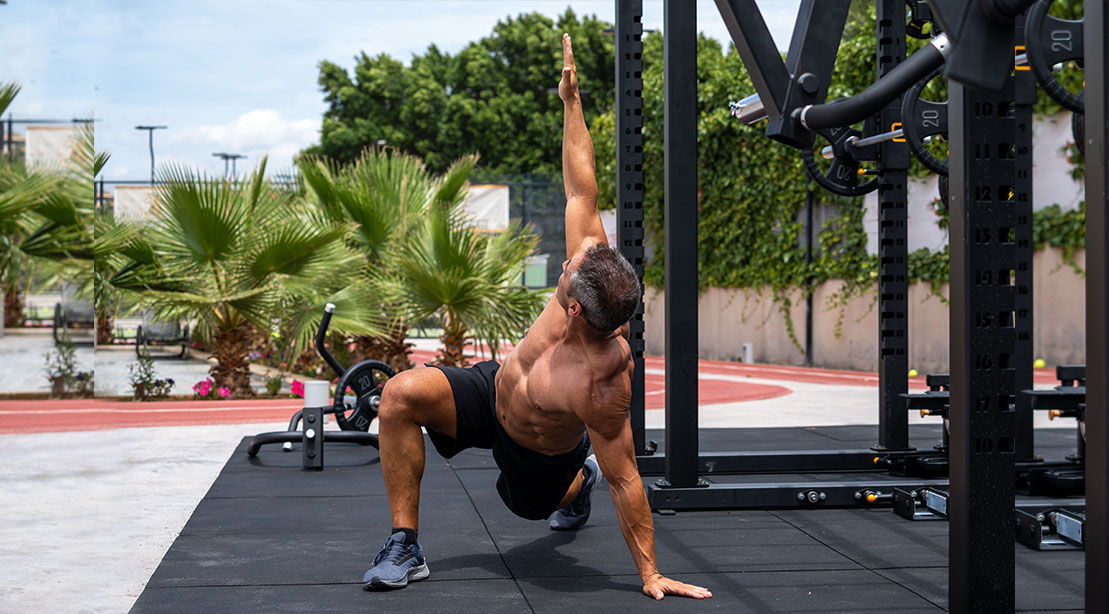Mobility training is the utilization and the ability to actively move a joint (where two bones meet) before being restricted by surrounding tissues (ligaments, tendons, muscles). Examples of mobile joints include ankles, hips, thoracic spine, and shoulders.
Performance refers to how effectively your body can execute physical stuff, whether lifting weights, running, or performing any athletic movement. It’s about harnessing or improving your strength, endurance, speed, and agility to achieve peak results to beat your opponent or crush your fitness goals. It encompasses the ability and capacity to push one’s limits, recover efficiently, and continually improve one’s physical prowess.
Mobility is one tool in your toolbox for enhancing your performance, whether under the bar or on the court.
We have all seen those with all the physical tools dunk basketballs, catch touchdowns, and squat 500 pounds without breaking a sweat. For the rest of us who aren’t so genetically blessed, regular training is a small but vital way to improve our performance. Mobility drills are often considered warmup tools before hitting the weights or the field of battle.
However, the real game-changer could be incorporating regular mobility work beyond your usual routine. Below, we’ll explore why mobility training is essential for performance and provide a sample mobility routine that you can easily incorporate into your off days. It’s time to take your performance to the next level with mobility training.
Why Mobility is Vital For Performance
Enhanced mobility allows you to move through a wider range of motion without muscle stiffness, significantly boosting your performance. It is crucial for performance, not just for excelling in your sport but also for staying in the game longer without getting injured and recovering faster after a grueling session. Let’s delve into why mobility is a crucial aspect of performance.
Improved Speed
In sports, the ability to change direction quickly without losing speed or quickness is crucial. Less muscle stiffness means smoother, more effortless movements. Improved mobility can make you more agile, enhancing your athletic performance. When Steph Curry “breaks” an opponent’s ankles on a drive to the basket, that’s the benefit of mobility in action.
It Keeps You In The Game Longer
Limited mobility can force your body into compensatory movements that may lead to injury. When one joint is limited in movement, other body parts step into the job that isn’t their role and bear the extra load. This compensation, over time, can result in pain and injuries. For example, if your thoracic spine lacks the mobility and strength for deadlifts, your lower back will round to support the weight, causing undue lower back pain.
Understanding and addressing these issues through training can ensure happy lifting and movement.
Furthermore, you stress your joints and muscles whenever you run, lift, jump, or change direction. A joint that can move through its full range of motion (ROM) is better at absorbing force, making it safer and more efficient.
Get Back on The Pitch Faster
Recovery is where the magic happens, and mobility work is critical to speeding up that process and getting you back in the game faster. By incorporating mobility exercises into your off days, you’re not just going through the motions but actively promoting better blood flow to your muscles. This increased flow helps deliver essential nutrients and oxygen to your muscles, aiding repair and growth.
By reducing muscle tension through targeted exercises, you also help flush out metabolic waste and toxins that build up during and after intense workouts. Improving mobility means less muscle soreness and stiffness, allowing you to bounce back quicker and return to your training with less downtime.
Imagine hitting the gym hard, confident that you did everything possible to aid your recovery. With improved mobility, you can train more frequently and with greater intensity for better gains.
Sample Off-Day Mobility Routine
Walk or jump on a cardio machine for five minutes to get the blood moving, and then get stuck into this simple full-body mobility routine to help improve your performance
1A. Elevated Ankle Dorsiflexion Stretch: 30 seconds or more on each ankle
1B. Dynamic Half Kneeling Hip Flexor Stretch: 30 seconds to one minute per side
1C. Passive Leg Lowering: 10-15 reps per side.
1D. Quadruped Thoracic Rotation: 8 to 12 reps per side.
1E. Cat-Cow Stretch: 10 to 15 reps
1F. Spiderman Lunge & Reach: 6 to 8 reps per side
Run through one to two times for two to three circuits.

